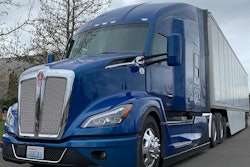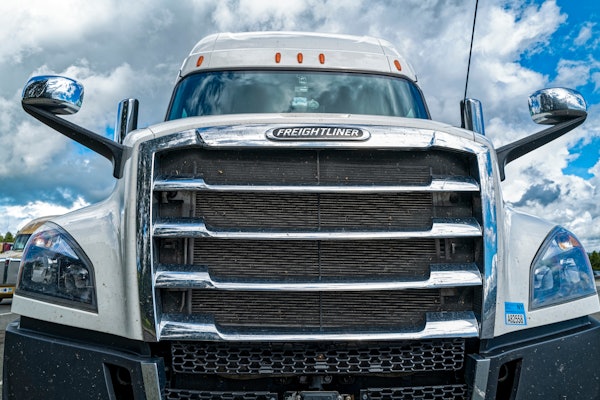Non sufficit orbis, or "The world is not enough." I share that family crest with the timeless British agent 007.
The status quo is easy. Being an agent of change is hard. You easily get labeled a provocateur. Positions are often discounted as "too passionate." Just getting an audience with decision makers can be challenging. No elevators may be available for that crucial 30-second pitch.
I've been there. It can be overwhelming to fight for an idea in the face of the powerful forces wanting to stay the course. I have worked with some innovative engineers who developed poor corporate reputations for pushing the envelope beyond management's comfort zone.
Isn't making the status quo uncomfortable the very purpose of research and development? Isn't creativity why we care so much about patents and intellectual property?
A core tenant of free market business is the goal of continuous improvement. It's often said that if your business is not growing, it's dying. I would rephrase that; if your business is not changing, it's eventually headed to bankruptcy — you just haven’t gotten the memo yet.
One of my passions is aerodynamics, a concept variously scorned and embraced over the decades in the freight world.
It's always amazed me how some people in the trucking industry abhor aerodynamic improvement. It’s like they enjoy arrogantly spending more on fuel each trip. They sit in the truck stop cafe proud that their business is earning less than their competitors. Or if you are a truck dealer, getting diminishing returns from a shrinking market of non-aerodynamic products.
Don't get me wrong. My roots in trucking include proudly helping develop a cabover for one OEM, and several long and tall chrome industry icons for another. My bookshelf has a lot of chrome models on it. I get that being able to customize a truck with shiny option content has huge market appeal and keeps dealers and parts desks ringing cash registers with all that bling.
But trucking is about earnings minus cost per mile. Fuel is a huge part of that (generally a third of the revenue). It’s hugely important to the bottom line whether your truck gets 9-10 MPG versus 6-7 MPG.
Enter the Department of Energy’s SuperTruck program in 2009. Four OEM teams produced vastly more aerodynamic tractors than were in production at that time. All four exceeded 10 MPG in real-world conditions and loading. I was fortunate to be part of one of those teams.
The aerodynamic innovations were relatively simple things. Edges were rounded; gaps were sealed or eliminated; and wind obstructions like tripod hood mirrors and clunky jungle gym west coast chrome mirrors were replaced with sleek, efficient designs. Some of the teams even replaced the mirrors with cameras. Skirts and tails were added to trailers. Hoods were sloped down. The tractor-trailer gaps were eliminated. The sleeper roofs were tuned to align with the trailer’s top. All these pretty simple changes achieved in some cases a whopping 50% reduction in drag.
The results were so obvious that OEM management and engineering teams incorporated much of these improvements into production models. Drivers started exceeding 10 MPG in real-world long haul commercial use as NACFE demonstrated with seven drivers in 2017's Run on Less and over 8 MPG in regional haul demonstrated with 10 drivers in 2019's Run on Less Regional.
The return on investment from DOE’s SuperTruck 1 was so great, a SuperTruck 2 program was funded in 2016, this time with five OEM teams.
NACFE just released a report summarizing SuperTruck 2's innovations. I moderated the SuperTruck 2 OEM and DOE panel at TMC 2024 to an audience of nearly 500 attendees, including many fleets. These SuperTruck teams have thrown down the gauntlet of change, achieving huge gains in miles per gallon and freight efficiency.
We will see where the ideas from these SuperTruck agents of change take over the trucking industry in the years ahead.
Vastly superior new aerodynamic tractors are still possible. Yet it was particularly rewarding for me to see OEM production Class 8 tractors on the TMC exhibit floor that universally had adopted SuperTruck learnings. Every OEM showed streamlined aerodynamic trucks with full skirts, optimized hoods, gap seals, ground effects skirts, fender closeouts, bogie fairings, wheel covers, improved sleeper extenders, improved hoods, cab mirrors and more.
SuperTruck 1 and 2 aerodynamic improvements are also going to extend the range of near-zero alternative fuel and zero-emission tractors well into the future.
To all of the reluctant objectors to aerodynamics over my four decades in this business, I want to thank you for dragging your feet, losing money on each trip and truck while others took advantage of the improvement. Thank you for being happy with 6 MPG trucks so others could be overjoyed with 10 MPG ones. Your selfless sacrifice has helped others.
It's okay if you now jump on board the aerodynamics train. Your competitors won’t mind too much. You've made your points and paid your dues. It's time to reap the rewards of your recalcitrance. Think of how great your percentage gain in performance will be because you waited.












